I'm never sure whether its plants' in-built thermometers which tell them autumn's cooler days are arriving, or whether it's their in-built light meters which tell them that the daylight hours are getting shorter. Probably it's both, but whatever the mechanism some of the plants in our succulent patch are getting rather joyous and colourful now that autumn is upon us. Without a doubt, the star is the well named Sedum 'Autumn Joy', the wearer of the pink pompoms pictured below.
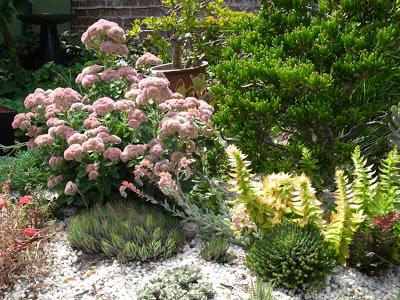
Its formal name is Sedum spectabile 'Autumn Joy', and this is
definitely the best it has ever looked. Formerly confined to a pot,
it's loving setting up home in the patch's light, sandy ground.
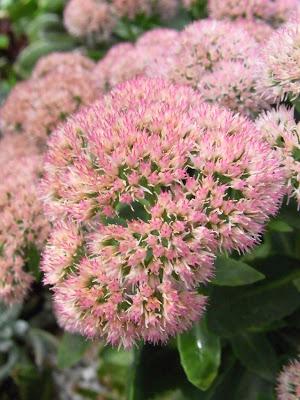
And the extra-nice thing about this pink person
is that it was a gift from a wonderful friend of
ours, Amanda, who lives in Kyneton, Vic, where
this plant really thrives, due to the cooler inland
climate down there. Amanda gave it to us when
we visited her several years ago, and in the years
since then it has proven its toughness by surviving
well enough, but it wasn't until it went into the
ground that it has shown what it can really do.
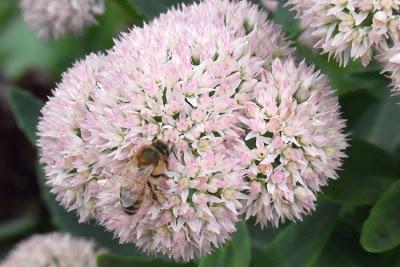
The whole plant is abuzz with activity now, as there are bees,
ants and flies crawling over every flower.
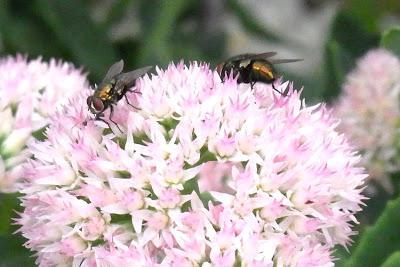
This plant is so glam that even the flies are pretty; these shiny
metallic bronze buzzers are zipping nervously everywhere now.
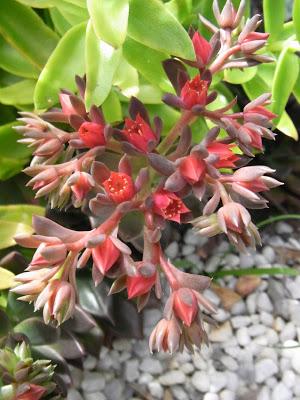
These are the flowers of Echeveria 'Black Prince'
a beautiful dark-leaved form of echeveria.
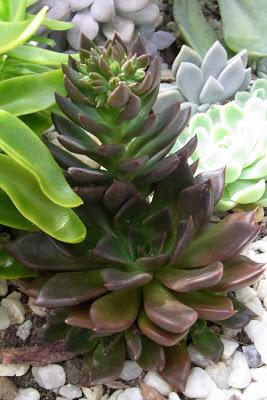
Here's one of them sending up what will
become another flush of flowers. For most
of the time it's a low-growing rosette in
the usual echeveria format (but not the
usual colour), yet when flowering time
comes around it sends up a hi-rise
column of leaves, topped by flower heads.
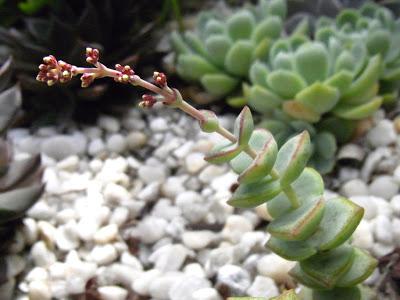
Several days from blooming yet, this is the infant flower spike
of a little Crassula perforata. This is the first positive sign with
this plant since I planted it last year. It has gone nowhere and
done nothing much since being removed from its pot and plonked
into the ground. I think it's been sulking, but maybe it's just a
slow starter after being transplanted. I've always been very fond
of the little pagoda-like format of its leaves rising on the stem,
so I hope it will forgive me my sins and settle in happily now.
If you're new to this blog and want to see what we did to renovate the soil and the patch itself last year, check out this September posting, and this follow-up in December.
